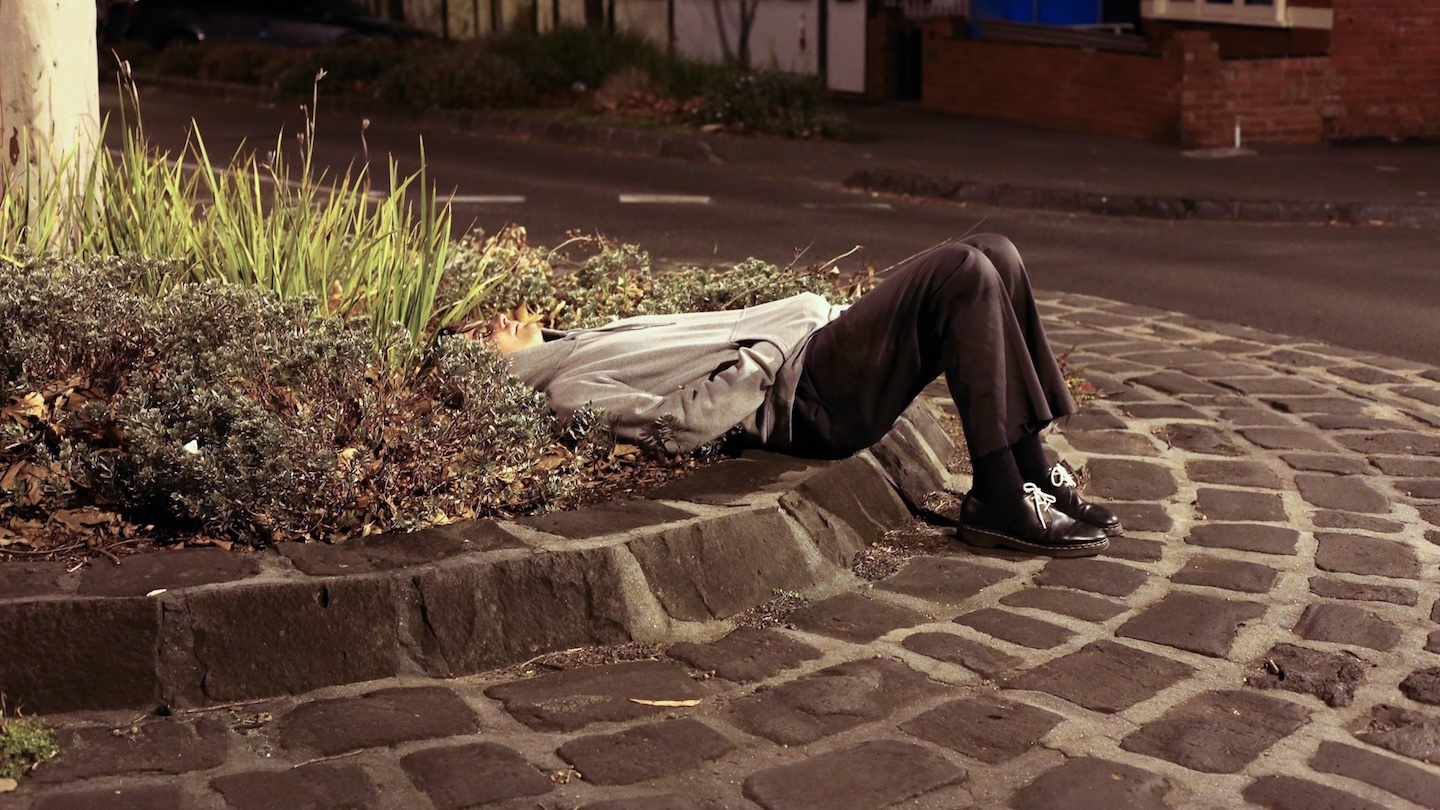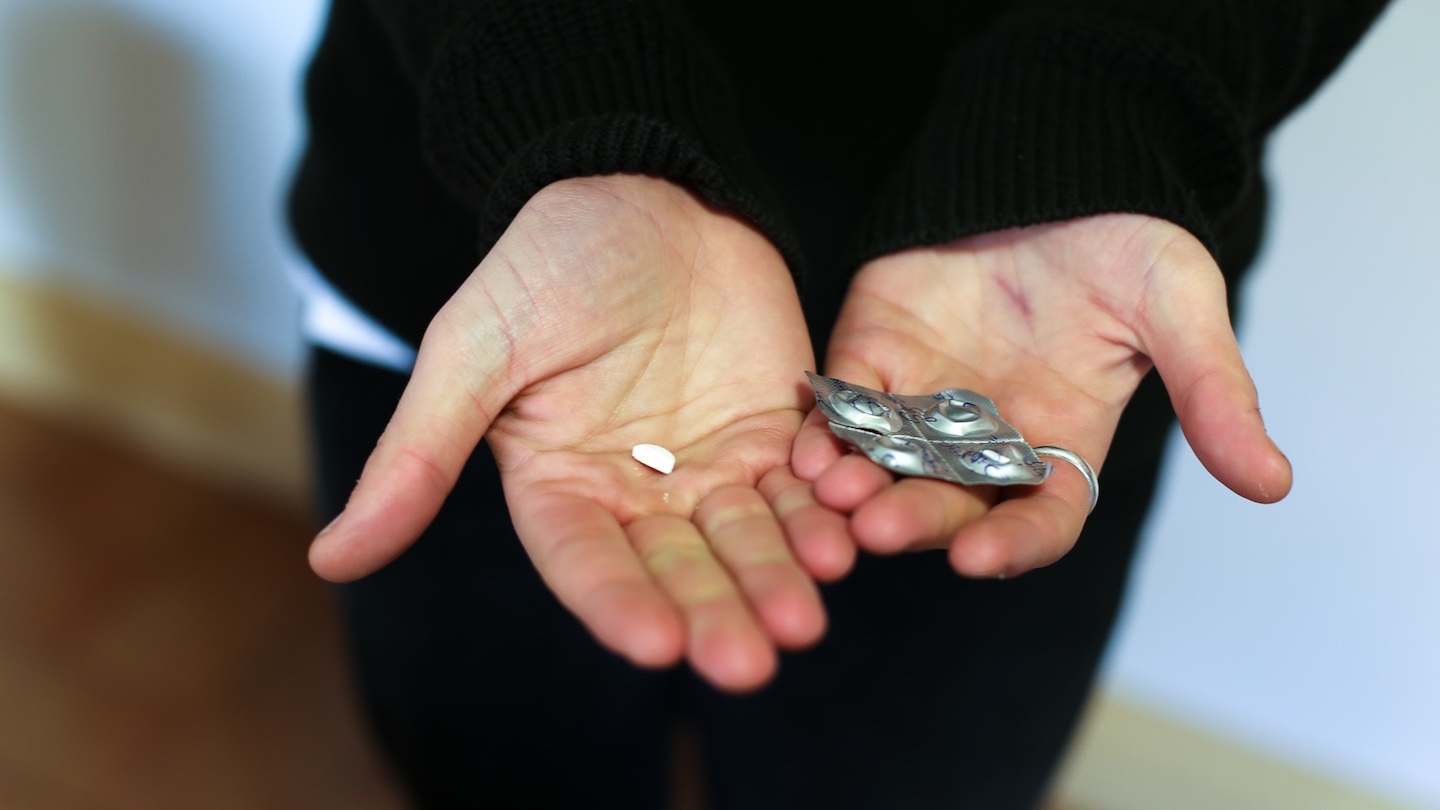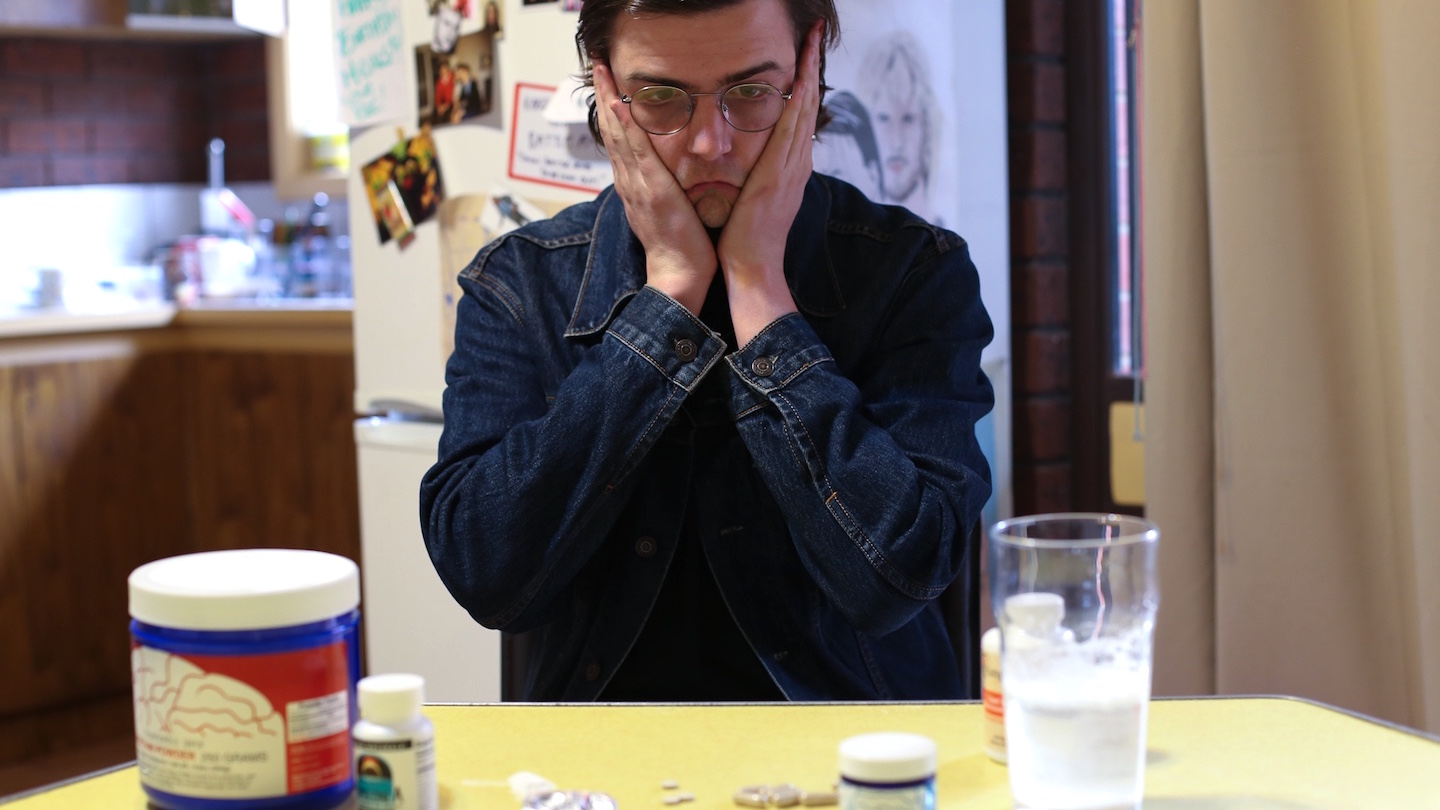Can trading eight hours for 20-minute polyphasic naps make you more productive? Could crystals be the secret to happiness? Read the rest of the VICE Guide to Self Improvement here.
Nootropics are those “smart drugs” that claim to improve your memory and concentration. Traditionally the domain of tech entrepreneurs and students, drugs like Modafinil and Piracetam have gone mainstream in the past few years forging a US $1 billion industry in the US alone.
Videos by VICE
Most of these chemicals aren’t new. The bulk of them are old prototypes, developed and abandoned by various pharmaceutical companies for treating conditions like narcolepsy and ADHD. For this reason, it’s often unknown why the chemicals never made it to market, which leads to some fairly valid concerns about their long term health effects.
Still, it’s easy to find positive reviews. The Reddit nootropics scene of 2017 is vast and passionately defended, with hundreds of threads espousing their pros. So who’s to believe? And which nootropics are safe/effective?
I decided to spend a week finding out for myself. After a lot of reading, I identified the internet’s five most popular nootropics (based on how often they’re mentioned) and spent about AU$150 getting my hands on them. Then, to review them properly, I took most of the week off.
The Control Test

In order to do this accurately, I needed a control. So, without any nootropics in my system, I did an online IQ test, as well as the MENSA online practice exam. I got a score 110 for my IQ and 21/30 for the MENSA test. I figured that every day I’d try a different IQ test and compare it to my original score, but also retake the MENSA test at the end of the week to see if there were any overall improvements.
I also got in touch with Dr Larissa Maier, a member of the core research team at the Global Drug Survey, just so I could have a expert opinion on the substances I was taking.
Test One: Aniracetam

Aniracetam was created in the 1970s, but was never approved by the US Food and Drug Administration (few nootropics are, to be honest). The makers of Aniracetam claim it heightens mood, focus, motivation, and improves memory formation. Although, as Maier pointed out, “No clinical studies reporting the use for cognitive enhancement among humans exist.”
The average dose is 1,500 mg per day, or just under a teaspoon. I decided to take three 500 mg serves throughout the day.
Frankly, Aniracetam made me feel like I was on speed. I felt my mood improve almost instantly, along with a tremendous surge of energy. I was confident, chatty, and without limitations. But, ironically, it really didn’t improve my cognitive abilities. I struggled to think straight and even deal with a minor task like counting money.

As I kept redosing, the initial high blew out and my lack of concentration got worse. I sat down for my daily IQ test, but I kept having to get up and walk around the room so it took about an hour to finish. My heart was racing, I lost my appetite. I couldn’t sleep that night, so I went for a long walk until I ended up in a garden bed looking at the stars. It was a classic night on drugs.
The next day I was shaking and anxious with no appetite whatsoever. Basically, I was coming down.
IQ result: 108
My rating: 2/10
Test Two: Oxiracetam

Oxiracetam is a fairly similar molecule to Aniracetam. Created in Italy in 1988, Oxiracetam is believed to work by stimulating the brain’s acetylcholine receptors, which in some mysterious way boosts memory. Actually, most synthetic nootropics are classed as “racetams“—all of which yield a range of poorly understood effects. In any case, oxiracetam’s 2,400 mg dosage was a lot higher than Aniracetam, so I went in feeling nervous.
Oxiracetam ruined me. It was rushy in the same way as Aniracetam, but I was entirely in my head. I felt thoroughly unmotivated, self conscious, and generally unable to interact with people. It also came with this sense of utter frustration, although I couldn’t pin down what I was frustrated about.

Interestingly, my IQ was up to 117—a seven point improvement over my control. But when I tried sudoku and a round of chess, I just couldn’t think. I was irritable, impatient, and I had to give up on both and go stand outside.
The next day was also a struggle. Like I’d spent the night smoking bongs. I was vague, confused, and unable to string a sentence together. It was hell. Oxiracetam was hell.
IQ result: 117
My rating: 1/10
Test Three: Huperzine A

After two days of getting walloped by synthetics, I was excited to try a plant extract called Huperzine A. It comes out of an Asian moss called Huperzia and has been widely used in Chinese medicine for centuries. Huperzine A allegedly works by preventing enzymes from breaking apart the neurotransmitter acetylcholine, which signals muscle action throughout the body. Dr Maier doubted these findings though, simply because they were based on studies with tiny sample sizes.
The average dose is 200 mg, so I had two 100 mg tablets in the morning.

According to legions of nootropics fans on Reddit, Huperzine A was the most effective drug I took. But, honestly, it didn’t feel like anything. I didn’t have any epiphanies, nor did I feel like the smartest person in the room, but I did feel unusually “arty.” I’m not a person who draws, but I spent the afternoon sketching some stuff that I felt unusually pleased with. I then pushed it a little bit further and went to the library to read about history… but retained none of the information. It was a nice way to spend a day though.
Also, no anxiety! The next day I felt completely fine and ready for another heavy duty pharmaceutical.
IQ Result: 103
Rating: 5/10
Test Four: Modafinil

Modafinil is undoubtedly the most famous nootropic on the market. It was developed in France from the ashes of a narcolepsy drug called Adrafinil, which was unpopular because it took so long to work. Chemists realised they could cut down wait time by synthesising the chemical that’s born out of metabolised Adrafinil—and that turned out to be Modafinil. Adrafinil was discontinued in 2011.
Modafinil shares similar traits with amphetamine but, again, its mechanism of action isn’t fully understood. According to Maier, Modafinil is the only nootropic with any solid credentials but it still comes with the the usual risks of headache, dizziness, nausea, and a dry mouth.

Modafinil is strong. I took the usual dose of 100 mg and it hit me almost instantly. My focus increased, but along with a sense of vertigo and nausea. I then spent a few hours reading large books to see if the focus would help. It did, but again I don’t think I retained much.
What really surprised me was how much sharper I felt. I really did feel like I could communicate and understand more—so much so that a friend actually pointed it out. Again, I struggled to sleep, but there wasn’t much of a comedown.
IQ Result: 118
Rating: 4/10
Test Five: Lion’s Mane

Lion’s Mane is a mushroom that’s used in Chinese medicine, but has recently appeared as a nootropic for its ability to support neuron-insulating myelination. High amounts of cerebral myelin are associated with improved memory recollection, but like Huperzine A these supposed benefits come with little in the way of peer-reviewed evidence.
I spent three days taking Lion’s Mane just to make sure I enjoyed its full potential but, honestly, it didn’t do much. Maybe it increased my heart rate, but maybe that was just incidental. And I did another IQ test and got 132, which only seemed to undermine the legitimacy of IQ tests.
IQ Result: 132
Rating: 3/10
Conclusion

From this experiment, all I can really say I took is that nootropics are fucked. The combination of mania, anxiety, overstimulation, loss of appetite, and sleep deprivation really took their toll. And frankly, I didn’t gain much. My IQ hovered around the same area and when I took my second MENSA test at the end of the week, I scored 22/30, which was an improvement of only one point. To my thinking, neither of those gains made the side effects worth it.
Nootropics do work, but their side effects are insufficiently addressed. Because their side effects are intense. And with this in mind, I’d probably just stick to coffee.
Follow Sam on Twitter
All photos by Lekk Porter




